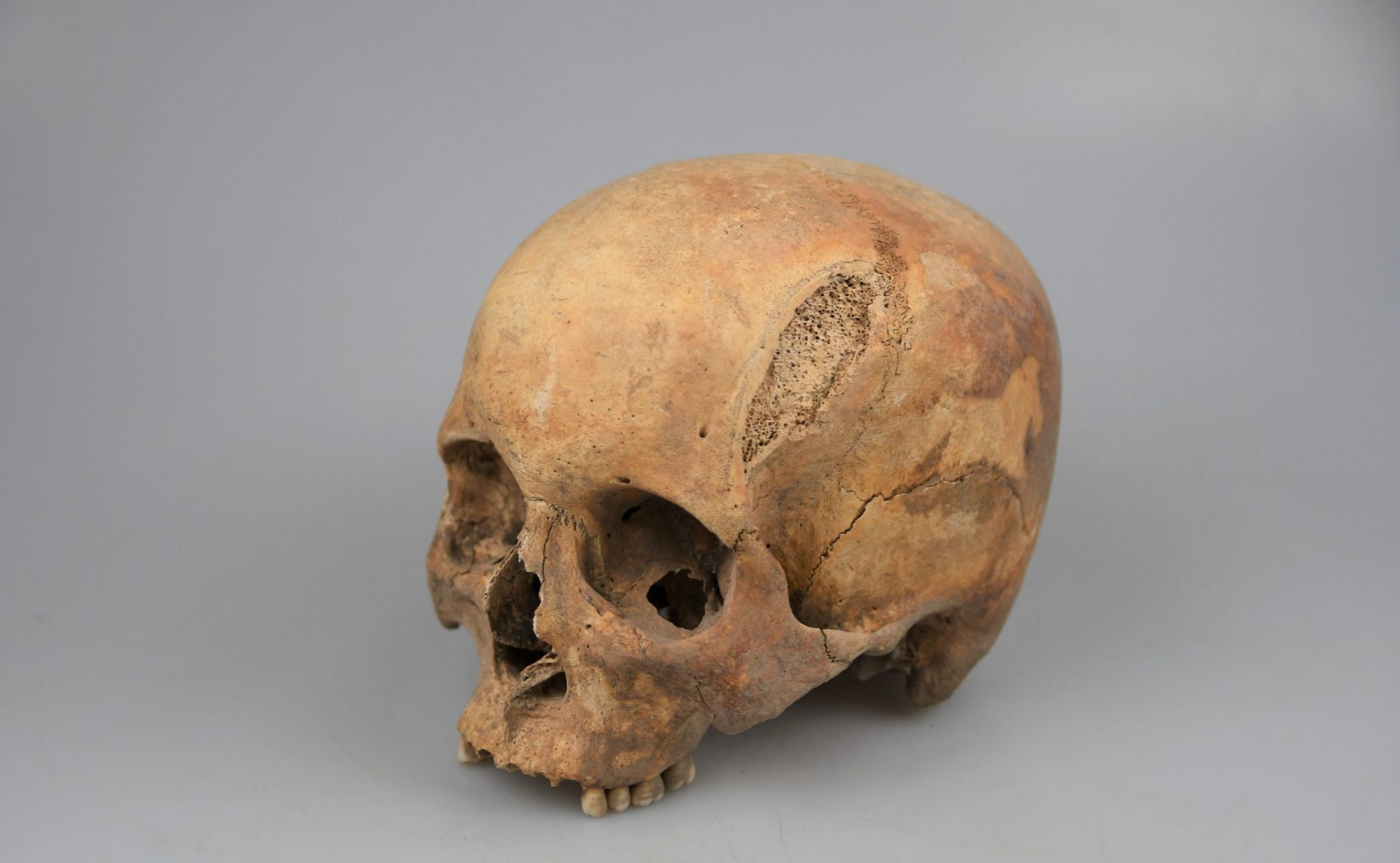The Marvelė burial ground is in the southwestern part of Kaunas and is the largest grave field of this period in the Baltic States. The total area of the Marvelė burial site is 58 995 m² and was investigated in 1991–2006 by archaeologist Mindaugas Bertašius. A total of 1 500 burials dating back to the 2nd-12th centuries were discovered. The burial monument is distinguished not only by the abundance of burials, but also by the sacrificial hearths and horse graves; it is the largest horse cemetery in Lithuania. Researchers distinguish several important stages: in 2nd-3rd century and part of 5th c. burials can be classified as inhumations; from 3rd-4th to 12th c. the remains of the dead are mostly cremated; 12th-13th c. is predominated by group burials; during 6th-12th c. Marvelė community sacrificed horses. The remains were either buried in wooden coffins, or surrounded by stone circles, sometimes a clay wall imitating a coffin was molded.
The collection contains skeletons of 786 individuals. Anthropological material is poorly preserved; the remains are heavily fragmented. Of all the well-preserved skeletons, 80.8% belong male and 19.2% to female. There are no well-preserved skeletons of non-adults.
|
Preservation |
n |
% |
|
Complete skeleton (>50 %) |
26 |
3,3 % |
|
Partially preserved skeleton (~50 %) |
80 |
10,2 % |
|
Fragmentary skeleton (<50 %) |
680 |
86,5 % |
Of the 786 individuals, 66.7% are adults and 33.3% had not reached maturity (Fig. 1). Male and probable male accounted for 35.9% of all individuals, while female and probable female – 28.5%. The age distribution of non-adults is shown in Fig. 2, and that of adults in Fig. 3.



